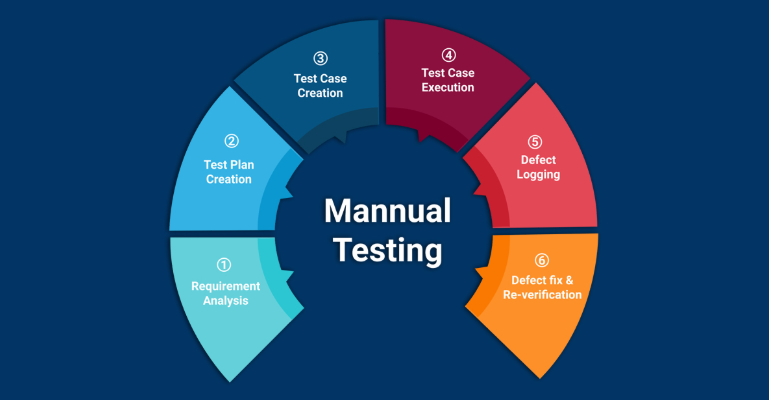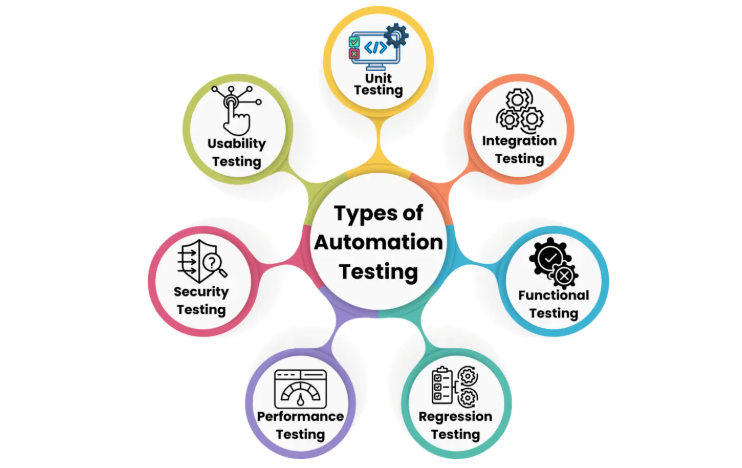

When you build software, you’re not just creating a product—you’re making a promise. A promise that it will work as intended, delight its users, and deliver measurable value. But promises in software are fragile. Without the discipline of software testing, even the most brilliant idea can unravel under real-world conditions. At SKM Group, we’ve seen it too often: projects that launch without rigorous testing quickly face user frustration, security breaches, or spiraling maintenance costs. The truth is simple—software testing is not a luxury. It’s the foundation for predictable, reliable delivery.
Software testing is the structured process of evaluating a software application against defined requirements to identify gaps, defects, or deviations. It’s not only about finding bugs—it’s about confirming that the system performs as expected in every scenario it will face in production. When you invest in testing, you’re ensuring that your product is not just functional, but also robust, secure, and user-friendly.
Its purpose goes beyond quality control. Effective testing gives you the confidence to release features at speed, knowing they’ve been vetted for reliability. It’s an insurance policy against operational risks and reputational damage.
Rely on SKM Group for IT services that are built around your unique needs: Learn more about our services.
Every successful testing process rests on two pillars: verification and validation.
Neglect either side, and you risk shipping a system that is either technically correct but irrelevant to user needs, or user-focused but riddled with implementation errors.

Quality assurance (QA) engineers are not simply bug hunters—they’re risk managers. Their role involves anticipating where failures could occur, designing tests to surface those weaknesses, and collaborating with developers to address them efficiently.
At SKM Group, our QA teams integrate deeply with development from day one. This partnership ensures that testing is a continuous thread throughout the project, not a disconnected, last-minute hurdle.
Introducing software testing early—often called “shift-left testing”—can save significant time and cost. Defects caught during design or development are exponentially cheaper to fix than those discovered after deployment.
Early testing helps you:
The earlier you start testing, the earlier you start controlling risk.
Software testing in Agile is not a single, end-of-cycle event—it’s a continuous, iterative process. In Waterfall, testing typically follows the build phase, which means bugs may remain undiscovered for months. Agile integrates testing into every sprint, allowing rapid feedback loops and faster time-to-market.
The difference is philosophical as much as procedural. In Agile, testers are embedded in cross-functional teams, working alongside developers and product owners. They participate in planning, daily stand-ups, and retrospectives, ensuring quality is everyone’s responsibility, not an isolated department’s task.
A well-structured software testing plan serves as your blueprint for quality. It outlines your testing scope, objectives, resources, schedule, and deliverables. Without it, testing becomes reactive and inconsistent.
When we design a plan at SKM Group, we start by mapping requirements into measurable test cases. We then define the testing environment, specify tools, assign responsibilities, and create timelines aligned with the development roadmap. Crucially, we set acceptance criteria so there’s no ambiguity about what “done” means.
Your plan should be dynamic—it evolves as new requirements emerge or market priorities shift. Treat it as a living document, not a one-time artifact.

In Agile, the answer is simple: from the very beginning. The moment user stories are drafted, QA should be involved in clarifying acceptance criteria and identifying potential risks. Testing is built into each sprint, with automation pipelines running in parallel to development.
Gain flexibility and round-the-clock expertise through SKM Group’s IT outsourcing: Find out more about IT outsourcing.
This early integration accelerates feedback and reduces bottlenecks. Instead of waiting for the “testing phase,” defects are detected—and fixed—within days, sometimes hours, of being introduced. This keeps quality consistently high without slowing delivery.
Functional Testing – Ensuring Feature Correctness
This form of testing verifies that each feature behaves exactly as intended according to requirements. Functional tests simulate user interactions, ensuring that input data produces the correct output and that business rules are followed precisely.
Performance & Load Testing – Assessing Responsiveness under Stress
Here, the goal is to understand how your system behaves under expected and extreme workloads. By simulating high-traffic conditions, you can identify performance bottlenecks and ensure that response times remain acceptable even during peak usage.
Security Testing – Identifying Vulnerabilities
Security testing probes for weaknesses that could be exploited by attackers. It covers authentication, authorization, data protection, and vulnerability scanning. In an era of constant cyber threats, neglecting this area can have catastrophic financial and reputational consequences.
Usability Testing – Validating User Experience
A product can be technically flawless but fail if users find it confusing. Usability testing evaluates navigation, design clarity, and overall intuitiveness. It answers a simple but critical question: Can users achieve their goals without frustration?
Regression Testing – Preventing Reintroduced Bugs
Every time you release a new feature or fix a bug, you risk unintentionally breaking something that previously worked. Regression testing safeguards against these backward steps, ensuring past functionality remains intact.
Compatibility Testing – Cross-Platform Consistency
Today’s users access software on countless devices, operating systems, and browsers. Compatibility testing ensures that your application delivers a consistent experience across all intended platforms, preventing fragmentation and user dissatisfaction.

Choosing the right software testing automation tools is not about chasing trends—it’s about aligning capabilities with your project’s complexity, team skillset, and long-term maintenance strategy. At SKM Group, we evaluate tools on several criteria: integration with existing CI/CD pipelines, ease of script maintenance, reporting capabilities, and scalability for future releases.
Popular options like Selenium, Cypress, and Playwright dominate web testing, while Appium is favored for mobile. For performance testing, JMeter and Gatling remain reliable choices. The key is to avoid tool sprawl. Focus on building a lean, well-integrated toolset that supports both functional and non-functional testing without adding unnecessary overhead.
Automation is not a replacement for human insight—it’s a force multiplier. By automating repetitive tasks, you free QA engineers to focus on exploratory and high-value test scenarios that machines alone can’t cover.
Let SKM Group craft innovative software solutions tailored to your business goals: Explore custom software development.
Black-box testing for input–output validation
Black-box testing treats the system as a sealed unit. You provide inputs, observe outputs, and verify them against expected results—without knowing or caring about internal code structure. It’s particularly effective for validating user-facing features and business logic.
White-box testing for internal logic coverage
White-box testing requires knowledge of the internal codebase. It verifies control flows, data flows, and specific paths within the application logic. This technique ensures that all branches and conditions are executed during testing.
Risk-based testing to prioritize high-impact areas
In projects with limited time or resources, not every feature gets the same testing depth. Risk-based testing focuses on the areas that, if they fail, would cause the most damage—financially, operationally, or reputationally.
Exploratory testing for ad-hoc defect discovery
Exploratory testing relies on the tester’s creativity and intuition. Without predefined scripts, QA engineers navigate the software freely, often uncovering hidden defects that scripted tests miss.
Data-driven testing to streamline test case variations
Here, you separate test logic from test data. By using external datasets, you can run the same test scenario with multiple input combinations, dramatically increasing coverage without rewriting scripts.

Requirement Analysis – Defining Test Objectives
This stage translates business requirements into measurable testing objectives. QA teams work with stakeholders to clarify acceptance criteria and identify testable conditions. Without this clarity, test cases risk drifting away from business goals.
Test Planning – Crafting Your Software Testing Plan
Here you define the scope, resources, tools, timelines, and risk mitigation strategies. A solid software testing plan anticipates constraints and sets realistic quality benchmarks for the team.
Test Case Development – Designing Automated and Manual Scripts
Test cases serve as the blueprint for execution. Manual scripts handle nuanced, experience-driven scenarios, while automated scripts focus on repetitive, high-volume validation.
Test Environment Setup – Preparing Infrastructure and Tools
Without a stable, production-like environment, test results lose credibility. This phase ensures all hardware, software, network configurations, and data are ready for accurate, repeatable testing.
Test Execution – Running Tests and Logging Defects
Tests are run according to the plan, with all anomalies logged and prioritized. Execution is not just about finding bugs—it’s about collecting actionable data that informs both development and product strategy.
Test Closure – Reporting Metrics and Lessons Learned
Once testing is complete, teams compile results, document defect trends, and provide recommendations. Lessons learned here feed directly into refining future software testing strategies.
In today’s fast-moving software market, delivering a feature is no longer enough. You must deliver it flawlessly. That means embedding software testing into the DNA of your project from day one, treating it not as an expense but as an investment in stability, security, and brand trust.
At SKM Group, we’ve seen how rigorous testing transforms delivery outcomes—shorter release cycles, fewer post-launch crises, and consistently higher user satisfaction. Quality is not an accident. It’s the result of deliberate, methodical work that starts before the first line of code is written.
Software testing ensures that an application functions as intended, without defects or vulnerabilities. It validates performance, usability, and compatibility across platforms before release. Testing minimizes costly post-launch issues and protects brand reputation. By identifying bugs early, it saves time and resources in the long run. In short, testing guarantees reliability, quality, and customer satisfaction.
Software testing includes functional testing, performance testing, security testing, and usability testing. Functional tests verify that all features work as designed, while performance tests evaluate speed and stability. Security testing identifies vulnerabilities to protect sensitive data. Usability tests ensure that users can interact with the application intuitively. Combining multiple types of testing provides comprehensive quality assurance.
Testing early in development—known as “shift-left testing”—detects issues before they grow into complex problems. Fixing bugs at this stage costs significantly less than doing so after deployment. Early testing also improves communication between developers, testers, and stakeholders. It encourages continuous feedback, leading to a smoother development cycle. Ultimately, this proactive approach results in faster, more stable releases.
Automation accelerates testing by executing repetitive test cases quickly and consistently. Tools like Selenium, Cypress, and Jenkins enable continuous integration and delivery (CI/CD). Automated tests detect regressions immediately after code changes, maintaining software stability. They also allow teams to focus manual efforts on complex, exploratory testing. In large-scale projects, automation is essential for speed, accuracy, and scalability.
A well-tested product delivers a seamless, frustration-free experience to users. It ensures smooth navigation, quick response times, and error-free functionality. Testing also helps align design with user expectations by validating interface behavior. Users notice stability and performance instantly, which increases trust and retention. A flawless user experience often becomes a key differentiator in competitive markets.
Neglecting testing can lead to bugs, crashes, data breaches, and poor performance. These issues can damage reputation, cause customer churn, and lead to financial losses. Post-release fixes are often far more expensive than pre-launch testing. Security gaps may also result in regulatory penalties or lawsuits. Simply put, skipping testing is a risk no business can afford.
Need tailor-made software? We build scalable, secure solutions from scratch.
Discover more
Comments